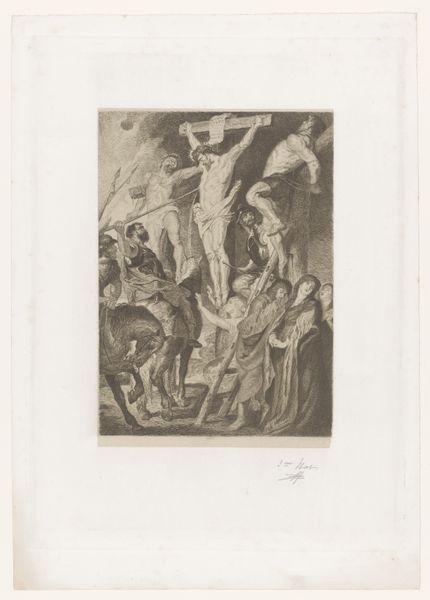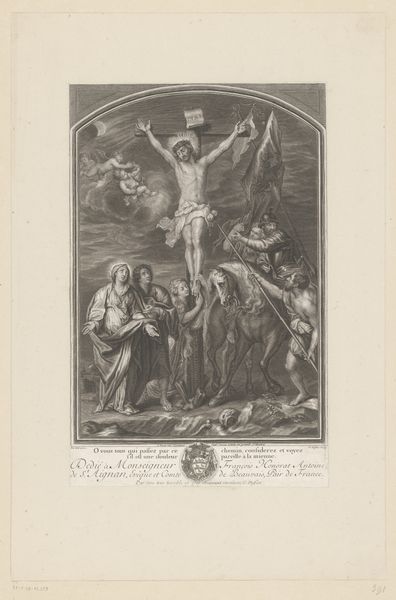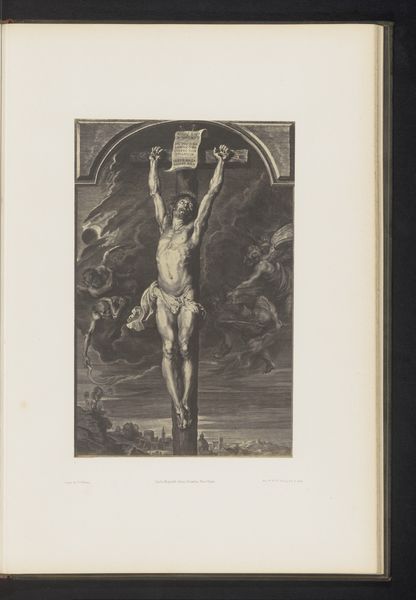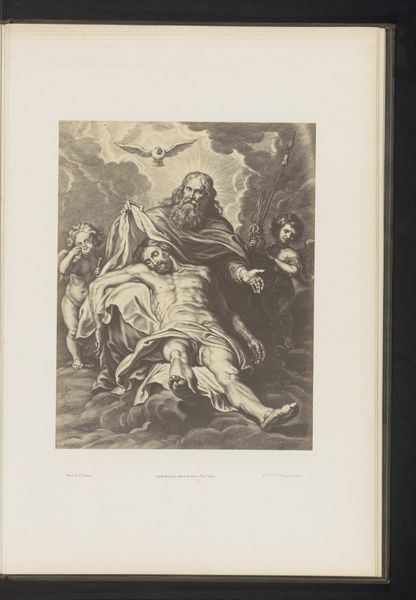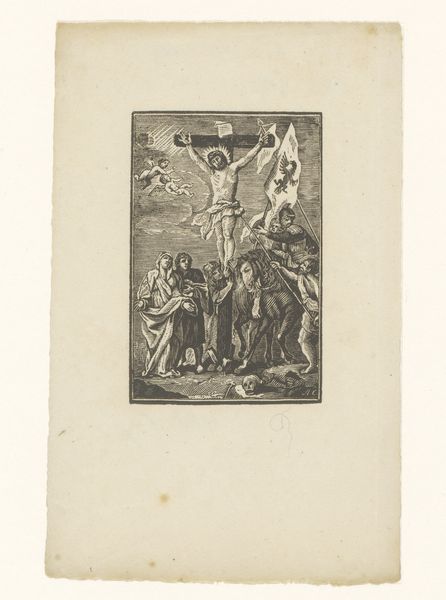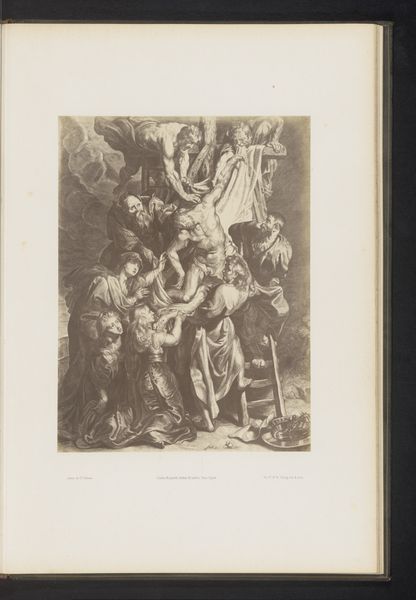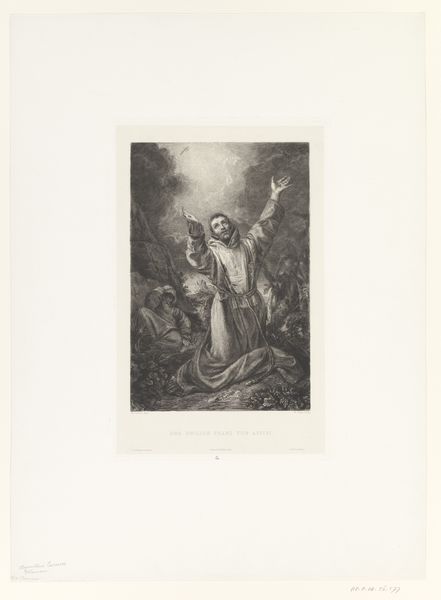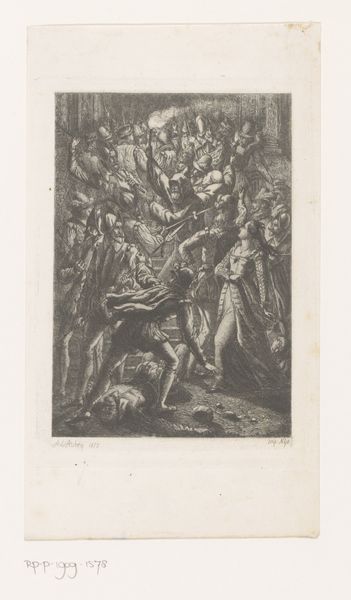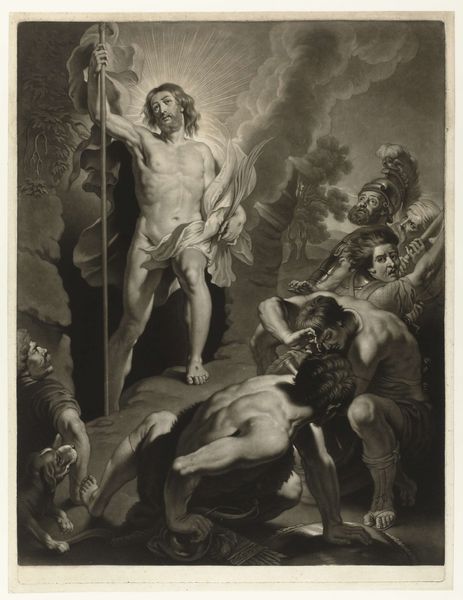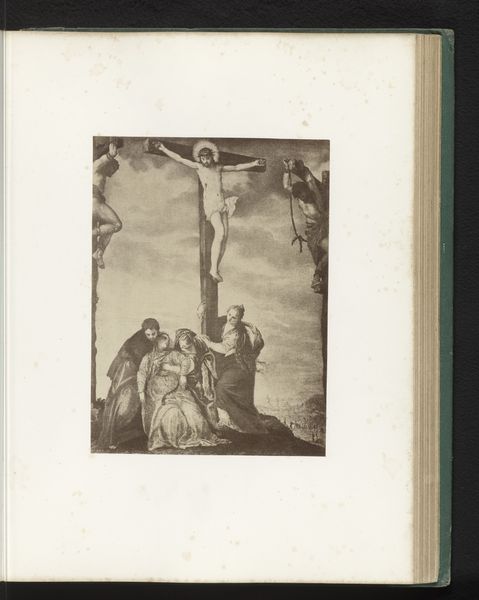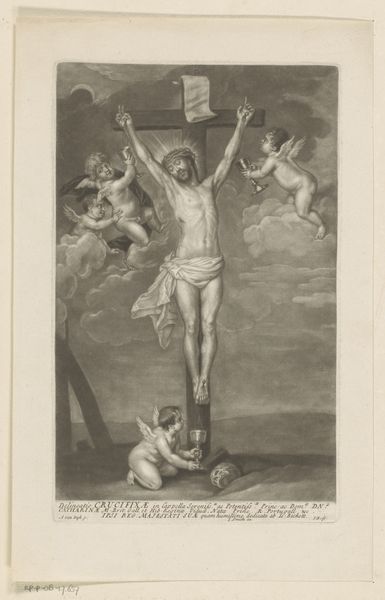
Fotoreproductie van een gravure van De wederopstanding door Schelte Adamsz. Bolswert, naar het schilderij door Peter Paul Rubens before 1858
0:00
0:00
Dimensions: height 290 mm, width 212 mm
Copyright: Rijks Museum: Open Domain
Editor: This is a reproduction of Schelte Adamsz. Bolswert's engraving after Peter Paul Rubens’ painting, “The Resurrection,” dating from before 1858. It's striking how much movement Bolswert captures using just line, and there is a real feeling of triumphant energy coming from the figure of Christ. How do you interpret the historical and social implications of this type of representation? Curator: The choice to reproduce Rubens, particularly this subject, speaks volumes. In the Baroque era, and even in reproductions made later, “The Resurrection” was a powerful declaration. It's not just about religious belief; it’s about power, both divine and earthly. Consider how Rubens used classical ideals of the male body to depict Christ, associating religious authority with physical dominance. What do you notice about the figures surrounding Christ? Editor: They're either prostrate, cowering, or seemingly in awe, overwhelmed by His presence. There’s a real hierarchy on display. Curator: Precisely! This engraving, in making the image accessible, served to reinforce a specific ideological message, solidifying existing power structures. The act of circulating images like this, even in print form, actively shaped the viewers’ understanding of faith, and very likely, social order. How might this image have been used in contrast to, or in support of, Reformation-era challenges to the Catholic Church? Editor: It's fascinating to think of it as a deliberate assertion of authority. So it becomes less about purely religious devotion, and more about a visual argument for established hierarchies. I hadn’t considered how printmaking itself played a role in disseminating these messages. Curator: Absolutely. It pushes us to consider art as an active agent within complex social dialogues rather than merely a passive reflection. Thanks for considering with me how art echoes social and political dialogues. Editor: I agree. Seeing the work as a document of its time makes me see it with new eyes.
Comments
No comments
Be the first to comment and join the conversation on the ultimate creative platform.
